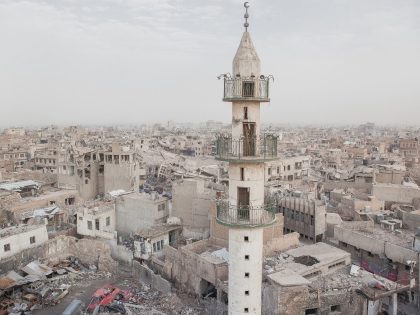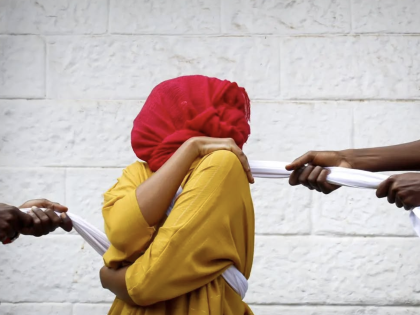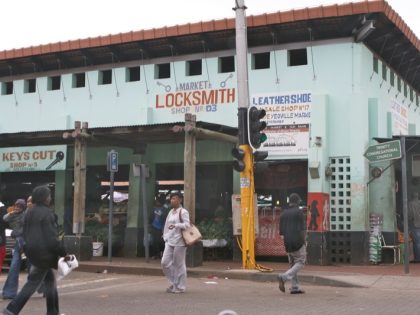So What Happens After Rhodes Falls?
One of the most scandalous statistics at the University of Cape Town: only 3% of academic staff are black, and only two full professors are black in the faculty of Humanities.

“My brother, please come and join us.” These were Chumani Maxwele’s disarming words that drew me in from being a curious observer of the student action at the statue of Cecil John Rhodes, one hot afternoon in mid-March. A week or so before, Maxwele made headlines for dousing this same statue in generous lashings of human faeces, protesting against this symbol of the University of Cape Town’s colonial heritage. Here, he approached me holding a black bag and cellotape, inviting me to join students in putting together a makeshift quilt from bags usually reserved for garbage.
I stepped forward, knelt down and joined a group of other mostly black students who collectively and calmly went about the business of piecing together the crinkled, jet black sheet. I was seized by the power of this simple action, of communally patching together a covering in the mid-afternoon sun as security and members of the media looked on.
Once it had been pieced together, some brave, wiry students ascended the granite plinth, and working in careful synergy, balancing precariously, they drew the fluttering, black plastic sheet over the weather-beaten Rhodes. You heard the creaky-squeak of reams of cellotape that were unfurled in long, dark ribbons that were slung around and around the effigy, as they sealed it in the thin, dark plastic shroud. Wrapped in cheap material reserved for waste, the once magisterial Rhodes was left looking like a sad bergie, a homeless drunk, shabbily covered, shamefully alone.
Later that evening I returned to the statue wondering whether the wrapping had been removed. I was surprised to find the statue still covered and some workmen were busy grinding and hammering away at some structures nearby. That they told me these would be the ‘comments kiosks’ for students to express their feelings about the goings on. At that time, more than a week into the on-going protests, UCT had finally woken up to the idea that they needed to address the roiling public sentiment. Of course it was already long past time for public comment and debate.
Standing at the statue, in the crackling light of the workmen’s grinders, I noticed a car pull up and halt while a young student of color hopped in. The car paused for a second while the student pointed to the statue, probably telling his father about the day’s action. I realized then that Rhodes was more than a just an offensive symbol to black students; he was the face of UCT, situated at the very gateway of traffic between this prestigious institution and the wider world. Now it had been thoroughly soiled.
At one time UCT responded to the #RhodesMustFall campaign by trying to control the public narrative, to defend the university’s image, to defend Brand UCT. But already by then, when that student sat pointing, showing and telling about the fight against institutional racism, the #RhodesMustFall campaign had moved beyond anything public relations people could try spin.
It is now almost certain that Rhodes will fall (Ed: it might take a while what with all the committees to vote on it), and carried away still covered in rubbish bags. UCT says its listening and acting fast to have the statue moved. But as the on-going, powerful student actions have shown, this was never about a statue, about a brooding colonial Rhodes.
And when he goes, what will remain? How will his passing be marked? By mandatory courses on “White Privilege” for all first years, the renaming of its student residences which similarly honor figures offensive to the black majority like “Smuts Residence” and “Jameson Hall” or maybe a moratorium on the appointment of white academics to accelerate the rate of transformation? (Ed: One of the most scandalous statistics is that “by 2013, only three percent of academic staff at U.C.T. were black, and there are only two full professors who are black in the faculty of Humanities.”) How indeed will the dumping of Rhodes on the trash-heap of history ripple into a new and different future? These are interesting times.



















